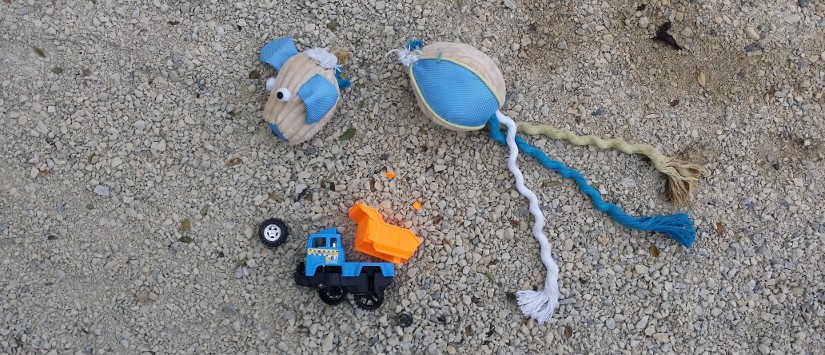The other day I was exposed to the soundtrack of a distressing scene on a neighbouring property. A young boy went into a rage. Not that I expect great impulse control from kids (see my last post), but this sounded worse than your average juvenile temper tantrum. It seemed the boy had been pushed over by the family dog, who I believe is a smallish dog of the “oodle” kind. In his anger the boy kept screaming abuse at his dog at the top of his voice and then smashed one of the dog’s toys to the ground in an apparent act of revenge. To escalate the situation, the boy’s father, who had been present throughout the event, threatened to destroy one of the boy’s toys in response (and it sounded like he actually did). It was a strange course of action in my mind. Wouldn’t it be more intuitive to calm the boy down and explain that the dog meant no harm; that dogs jump up because that’s what dogs do when they play or are excited about something; that dogs don’t understand what effect their exuberance may have or why falling over would be such a big deal anyway? But then, does every parent actually know this?
It’s everyone’s business
I know that some people regard it as their private business how they raise their kids or what they do with their dogs. But society has an obvious interest not only in preventing child and animal abuse but also in raising “wholesome” children and having sociable and friendly dogs. Child education and dog training are both areas of significant responsibility. The people in charge have the power to influence an individual’s path through life and their future behaviour with ramifications not just for the individual themselves but the community they live in. This power means it is vital that parents are aware of the potential consequences of what they teach their children as well as their dogs. And the only way to become aware and knowledgeable is education.
Just like having owned dogs – even many dogs – doesn’t make one a capable dog trainer, having children doesn’t make one an expert in child education. Experience isn’t always a positive thing. When the same mistakes or bad habits are repeated over and over because the teacher isn’t educating themselves, we have a problem. Because it is a problem – for all of us – when children grow up to believe that violence – verbal or physical – is an appropriate way to communicate, when they become self-centred adults with no regard for the needs, desires and feelings of others including non-human animals and when they lack the confidence to continuously learn and improve themselves and ask for help if they need to.
Everyone needs to be safe
Parents who are in charge of young kids and dogs have a number one priority: To keep everyone safe. As is evident from countless internet videos, photos and the odd news report this isn’t working so well. It seems there is a widespread lack of understanding as to what counts as appropriate interaction between kids and dogs and this keeps putting them at risk. Signs that the dog is uncomfortable and might be on the cusp of sliding into self-defence mode are not just ignored but apparently not even detected. This is generally worrying in regards to the dog’s welfare but it also poses a risk for the child’s and potentially the dog’s physical safety.
If a dog’s signs of discomfort are persistently ignored, it should come as no surprise if the interaction ends in a bite. This is a dog’s equivalent to yelling or pushing someone away because they feel besieged, threatened or frightened. The naive belief that a dog would not hurt their own family, especially children, is rooted in the romantic folklore surrounding the “perfect family dog” who does everything they are told, protects the family from bad people and apparently puts up with whatever harassment or abuse they are subjected to because they are loyal and somehow “know their family don’t mean them harm”.
Young children often do not understand that their actions might be annoying, painful or frightening for the dog. And unfortunately some children seem to have difficulty with showing kindness to animals. If parents detect the signs early they may be able to help their children develop better social behaviour and empathy and protect their animals from harm. In any case, showing children how to safely behave around dogs and teaching them to look after rather than teasing or scaring animals, is essential to ensure everyone’s safety.
To complement this, dogs have to learn the relevant skills to successfully negotiate life in a human society. Dogs cannot understand that their behaviour, such as jumping up or nipping can be a nuisance or even dangerous, especially to children. Impulse control exercises with lots of positive reinforcement and including the dog in family activities will help the dog to adjust their behaviour. Additionally, constant supervision of kids and dogs is a must until a child is old and mature enough to appropriately interact with dogs.
Clearly, parents have a lot on their plate. How can they succeed?
The answer is actually quite simple: By listening to the experts. No one can be expected to keep up to date with everything these days. There is simply too much information around. While many parents understand nowadays that physical or psychological punishment will not turn their children into successful adults, there seems to be very little understanding about the consequences of using punitive methods on their dogs and allowing their children to bully their dogs. Many of the common ideas about dog behaviour and training are just as outdated as military-style child education that relied on corporal punishment and mindless obedience. Of course, not everyone subjected to it ends up “damaged” but why risk it and what fun is there in life if we either dish out or receive violence, in whatever form?
We need parents to become truly savvy in dog behaviour, for the sake of their dogs, their kids and the community. Hopefully many present and future parents have been raised by their parents to be confident enough to learn continuously and to ask for help. Maybe then the following generations will grow up with a better understanding of dogs and other animals and we can continue to move towards a kinder and safer society.
 Copyright secured by Digiprove © 2016 Sylvie Martin
Copyright secured by Digiprove © 2016 Sylvie Martin 
